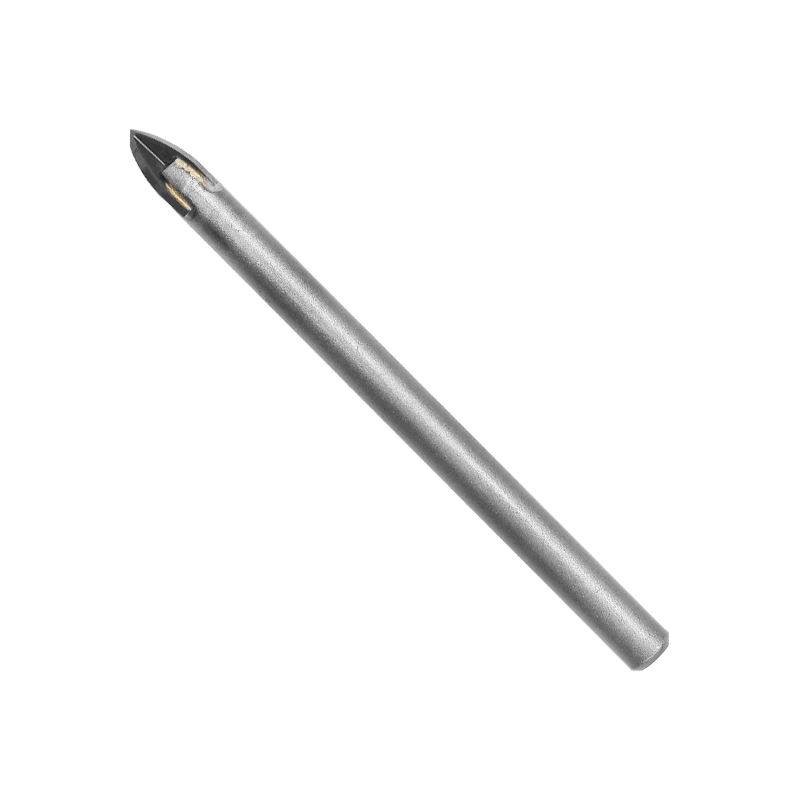2025-05-16
Understanding the Role of Design in Drilling Performance
The efficiency and quality of drilling into glass depend heavily on the design of the Glass Drill Bit. Unlike general-purpose bits used for wood or metal, those intended for glass require a more refined structure to handle the fragility and hardness of the material. Since glass does not compress or give under pressure, even slight design variations can mean the difference between a clean, precise hole and a cracked or shattered surface. Therefore, evaluating the bit's shape, tip angle, and cutting edge geometry is essential for suitable results.

Spear-Shaped Tips for Focused Precision
One of the common and effective designs for glass drilling is the spear-shaped tip. This shape allows for a focused point of contact, reducing the risk of the bit skidding across the smooth surface. The spear tip gradually increases in diameter, allowing the bit to slowly widen the hole while reducing the initial stress on the glass. This design ensures a controlled entry, which is critical for avoiding chips and microfractures that can compromise the material’s structural integrity.
Diamond-Coated Edges for Clean and Durable Cuts
Many high-quality Glass Drill Bits feature diamond-coated tips or edges. The use of industrial diamond grit adds significant hardness to the bit, enabling it to grind through glass rather than cutting it in the traditional sense. This grinding action creates smoother holes with fewer fractures and offers good durability over repeated use. The abrasive surface of the diamond layer reduces localized stress by distributing the cutting force across a wider area, which is particularly useful when working with tempered or thick glass.
Angle and Flute Geometry for Effective Debris Removal
The angle of the bit’s cutting surface also impacts how efficiently it penetrates glass. A shallow cutting angle reduces the chance of aggressive bite, helping maintain a slow, even pace. Additionally, the geometry of the flute's grooves along the bit plays a role in debris removal and cooling. While not as pronounced as in metal or wood bits, a modest flute design allows fine glass particles to exit the hole, preventing buildup and reducing friction. Poor debris management can cause overheating, which increases the risk of cracking.
Hollow Core vs. Solid Core Construction
Certain Glass Drill Bit designs incorporate a hollow core, especially in larger diameters, to facilitate water flow for cooling and debris removal. These core bits are often used for creating larger holes in mirrors, tiles, or glass panels. The hollow center allows for better regulation of heat and more consistent cutting performance over longer drilling periods. In contrast, solid core bits are more compact and generally used for small precision work where water delivery is less critical or can be managed externally.
Bit Width and Its Effect on Accuracy and Risk
The width or diameter of the bit influences not only the size of the hole but also the degree of control an operator has during drilling. Narrower bits are less invasive and reduce stress on the glass, making them ideal for delicate work. However, they are also more prone to overheating if not properly cooled. Wider bits remove more material and require more torque and stability. Choosing the correct bit diameter for the task is crucial to ensure both safety and precision.
Intelligent Design Enhances Results and Prevents Damage
The shape and design of a Glass Drill Bit are far more than aesthetic considerations—they are critical to successful, damage-free drilling. Each element of the bit, from its tip shape to its edge coating and core structure, plays a role in how it interacts with the delicate glass surface. By selecting the right design for the specific application, users can achieve cleaner holes, reduce waste, and protect both their tools and their materials. Precision, safety, and performance begin with the bit itself.